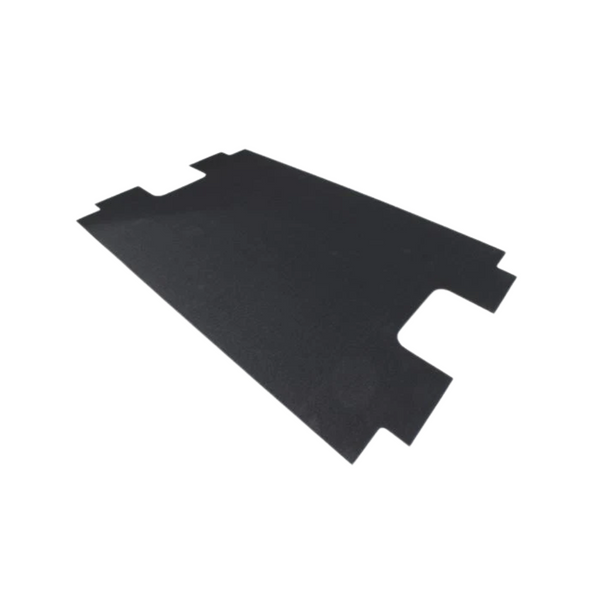Nowadays, it seems like there are a million different food options out there for your dogs. After all, many dogs have different needs, unique tastes, and dietary requirements. Some dogs may prefer chicken-flavored kibble or raw food, while others may only like a specific brand of dry dog food. Simply put; no two dogs’ tastes and preferences are the same, which is why so many different dog foods are available on the market. Luckily, the sheer number of dog food brands means that dog owners are able to have many options when searching for the best food for their pup. For example, many dogs have sensitivities to certain ingredients, such as grains. Fortunately, many healthy and tasty grain-free dog foods are out there to accommodate any sensitivities your pup may have.
While there is an abundance of great, nutritious dog food options out there, oftentimes, dog food can be deceiving. Yes, there are rules and regulations dictating how dog food must be labeled or marketed, but many pet owners are unaware of what exactly is in their dog food. We’re breaking down dog food terminology and what you should look out for when choosing the right food for your pup.

Finding the Right Food for Your Pup
Whether your dog is a young puppy or a full-grown adult, it’s crucial that they have a well-balanced and nutritious diet. This is where dog food comes in. When choosing the right food for your pup, it's important to take into consideration a few factors.
Ingredients
Perhaps the most important factor to consider when choosing your dog's food is the ingredients. After all, you want to ensure that your pup is consuming food that is safe, healthy, and properly fuels them. Typically, most dog foods are formulated with specific meat ingredients, such as chicken, beef, or fish. These ingredients are typically easy to find on dog food labels, but they will also be listed in the “ingredients” section on the back of the dog food bag. Ingredients will always be listed in descending order based on weight. For example, the first ingredient listed will have a higher weight in the total food ingredients than the last ingredient listed. Having a balanced diet is super important when it comes to keeping your dog healthy and strong, so you should consider dog foods that aren’t just limited to one food group. For example, dogs should be eating enough protein, fat, and carbohydrates every day.
When analyzing the ingredients of your dog’s food, something else you should pay attention to is the calories per serving. Depending on your dog’s age, breed, and size, they will have different caloric needs. Dog owners should avoid foods that are extremely high in calories, as that food could potentially lead to unhealthy weight gain in dogs. Similarly, it is recommended that dogs consume a good amount of protein as part of their daily diet, as many dogs live very active lifestyles and require protein for energy. Thus, when looking into foods for your dogs, you should always be mindful of the ingredients it contains.
Dietary Restrictions
While some dogs may be able to eat absolutely anything and process it totally fine, many dogs do have dietary restrictions. Perhaps your dog may have a grain allergy or a sensitivity to certain ingredients. Either way, there are some cases where dog owners may need to get special food for their pups to accommodate dietary restrictions. Today, there are many different dog foods available, and there is an abundance of options for dogs that must follow a specific diet. From popular dry kibble brands such as Purina to human grade dog food brands such as Spot & tango, there is a unique type of food for all dogs. When finding the right dog food for your pup, it is paramount that you are mindful of any allergies or sensitivities your dog may have. After all, if your dog has a grain allergy and regularly consumes dog food with grains, this could lead to serious gastrointestinal issues and discomfort for your pup. As every dog owner knows, the health and well-being of our dogs is our #1 priority, which is why it’s important to invest in healthy dog food that meets their dietary needs.
Dry Dog Food or Wet Dog Food
While there are many more options for dry dog food, another option for pups is wet dog food. So what is the difference between the two? Dry dog food is non-refrigerated dog food that is typically easier to store, less expensive, and more readily available storewide. On the other hand, wet dog food is typically refrigerated, more expensive, and less readily available in stores. Wet dog food is usually formulated from more fresh ingredients, such as fresh salmon or vegetables. One of the most important factors to consider when choosing between dry dog food and wet dog food is the cost. Wet dog food tends to be the most pricy option, whereas dry dog food is much more affordable (depending on the brand). Since it is not recommended to repeatedly switch your dog’s food, as this could upset their stomachs, dog owners must take into consideration the financial burden of dry dog food and wet dog food. Additionally, for dog owners who are torn between deciding which food is best for their dog, you can always check with your veterinarian to see what they recommend for ensuring the health and well-being of your pup.

Beware of Dog Food Terminology
Now, it's time to get into the nitty-gritty of all things dog food terminology. When browsing for dog food, you will likely encounter a lot of the same marketing jargon and phrases over and over again. That being said, it’s important to understand what exactly these words mean. Not only that, but there are many phrases and marketing words that most dog food brands likely don’t want you to know. So why is this? Let’s break it down.
When labeling dog food, many companies emphasize certain buzzwords that they know will appeal to shoppers. However, a lot of the time, these buzzwords can be quite misleading. For example, a dry dog food product may say “chicken flavored” or “with chicken”, but does that mean it actually contains chicken? Notice in this case, the product is not specific about the quality or quantity of the chicken in their product.
To better understand how dog food brands can be intentionally clever or misleading with their terminology, let’s compare it to another situation. Most of us humans (and dogs too) enjoy watching movies. Have you ever watched a movie that says “based on a true story”? Chances are that you have. However, did you know that a lot of the movie's plot line, characters, and events are likely fictionalized to some degree? This is because even though the movie may be based on a true story, many liberties have been taken for dramatic effect. So even though the movie has strayed away from the actual events that happened, the use of the phrase “based on a true story” typically leads to the audience believing that the movie is an entirely accurate depiction of the real-life story it’s based on.
So what do movies have to do with dog food? It’s simple; dog food brands use a lot of clever jargon and terminology to have you thinking the best about their dog food, just like how movies that are “based on a true story” get you to assume that everything 100% happened in real life (spoiler alert: it probably did not).
We get it; this sounds pretty confusing to pet owners, which is why we’re sharing the dog food terminology and phrases you should know so that the next time you go shopping for dog food, you can make an informed decision.

Dog Food Product Terminology to Know
The Association of American Feed Control Officials (AAFCO) is a regulatory body that creates rules for how dog food brands can market their products in the United States. That being said, many dog owners are generally unaware of what these marketing terms mean. Furthermore, a lot of the specific marketing terms commonly used tend to make the dog food product appear of a higher quality than it actually is. As we’ve previously mentioned, there are a lot of phrases and terms that dog food companies probably just don’t want you to know, and you’re about to learn why.
The below percentages are taken before the dog food undergoes processing, which can affect the actual percentage of ingredients found in the finished product.
- "Flavored": The term “flavored” is perhaps one of the most misleading and misunderstood marketing terms used by dog food brands. This is because a product can be “flavored” without even containing any amount of the name ingredient. For example, when dog food is “chicken flavored”, this dog food is not required by the AAFCO to contain any quantity of chicken in it. While “chicken flavored” dog food may contain a minor amount of real chicken in it, oftentimes no real chicken is found in the dog food- just artificial flavoring. That being said, be wary of “flavored” dog foods, as it’s important to know that the food likely does not contain any quantity of the named flavored ingredient.
- "Dinner," "Entree," "Platter," "Formula," or "Recipe": Dog foods that use any of these terms must adhere to the 25% rule. This rule means that the named ingredient must make up at least 25% of the total ingredient list. Say for example a dog food is labeled as “Beef Entree for Dogs”. This precise labeling means that beef- the named ingredient- must only make up at least 25% of the total product (without water). This may come as a surprise to shoppers, who likely assumed that a dog food product called “Beef Entree for Dogs” would be primarily made up of beef. This is just one of the many examples of ways that dog food terminology can be misleading to dog owners.
- "With": One of the most commonly used terms in the dog food market is “With”. Unfortunately, this term can also be one of the most misunderstood terms too. In this case, the named ingredient that the dog food is formulated “with”, is only required to contain just 3% of that ingredient in relation to the total ingredients weight. So, a dog food product labeled “Dog Food with Chicken” only needs to contain just 3% chicken in it. A dog owner who is not aware of this marketing term would likely assume that the product labeled “Dog Food with Chicken” would contain a high percentage of chicken. The reality is that the product likely contains a very minimal amount of the named ingredient- chicken. Thus, when shopping for dog food, it’s important to remember the 3% rule whenever you see the term “With”.
- "(Named Ingredient) Dog Food": When a dog food product is labeled as “(Named Ingredient) Dog Food”, it must follow the 95% rule. This rule means that the product must contain 95% of the named ingredient (without water). For example, if a dog food product is labeled as “Salmon Dog Food”, the total weight of the dog food must be at least 95% salmon. For dog owners looking to invest in dog food with a higher percentage of the named ingredient, consider searching for dog food products that follow the 95% rule. When a dog food product is labeled as “Chicken Dog Food” or “Beef Dog Food”, you have confidence knowing that your dog will be consuming a high percentage of the named ingredient.
Other Dog Food Product Terms to Know
- "Complete and Balanced": This term means that the AAFCO has determined that the ingredients of this dog food have met the requirements for a daily nutritious diet.
- "For All Life Stages": This term means this dog food is formulated for and approved for both puppies and full-grown adult dogs.
- "Puppy": Dog food labeled as "Puppy" is formulated to aid and support your dog through their development and growth stage.
- "Adult Maintenance": This phrase refers to dog food created for most adult dogs, with the exception of dogs with specific dietary needs or restrictions.
- "Senior" or "Mature": Dog foods labeled for "Senior" or "Mature" dogs are designed for older dogs that have more unique nutritional needs. For example, senior dogs tend to have more sedentary lifestyles, so “senior” dog food is commonly lower in calories to keep your dog at a healthy weight.
- "Weight Management": Obesity in dogs is a more common issue than you may think, which is why there are dog foods out there to help manage weight in dogs. “Weight management” dog food typically has reduced calories and fat.
- "Grain-Free": This phrase means that the dog food is free of any grains, such as corn or rice. This term should always be looked for when shopping for dogs with a grain allergy or sensitivity.
- "Limited Ingredient": This phrase means that the dog food contains a reduced number of ingredients. However, dog owners should always check ingredient lists to ensure that their dog is getting healthy and balanced food.
- "Organic": The term “organic” means that the dog food has undergone very minimal processing, and "organic" dog foods must meet certain requirements set by the regulatory body.
Now that you’re well-versed in dog food terminology, you can start making well-informed decisions when searching for food for your precious pup. It’s always important to take into account your dog’s age, lifestyle, and dietary needs when finding the best food for them, and if need be, you can consult with your veterinarian for advice as well. We hope this information helps you filter out the misleading marketing jargon so you can focus on finding nutritious, balanced, and healthy food for your four-legged friends!














